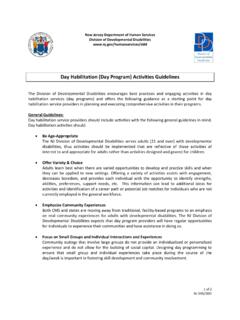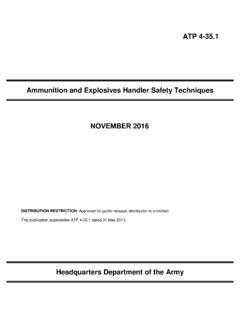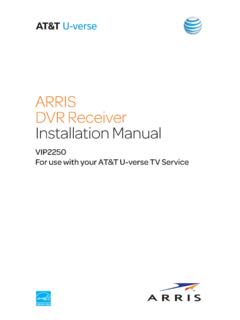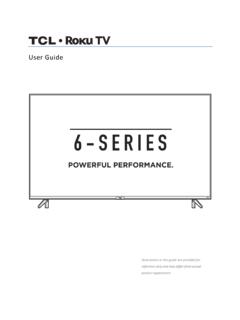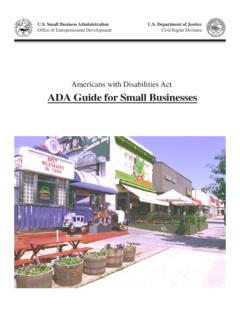Transcription of Guidelines for Design of Operating Theater - ICD
1 State of Kuwait Ministry of Health Infection Control Directorate Guidelines for Design of Operating Theaters 2007 2 CONTENTS Page Introduction .. 4 Lay out of the Operating Theater .. 4 Zones of the Operating Theater .. 4 The dirty outer zone .. 5 Main Access corridor, reception and waiting area.
2 5 Staff clothing change areas .. 5 Dirty utility room or soiled work room (sluice) .. 6 Janitor area (house keeping) .. 6 The clean zone .. 6 The sterile supplies store .. 7 General Purpose Store .. 7 Medication station .. 7 Anesthesia room .. 7 Sub-sterile area .. 8 Recovery Area .. 8 Scrubbing area .. 8 Scrub sinks .. 9 Clean work room (Clean utility room).
3 9 Rest area, lounge for staff, report preparation area, and toilet facilities. 9 A supervisor s offices or stations and teaching areas .. 9 Other Service Areas .. 10 Sterile Core .. 10 Measurements .. 10 General issues .. 11 Specific requirements .. 12 Walls .. 12 Floors .. 12 Ceiling .. 13 Doors .. 13 Illumination .. 13 Operating room lights.
4 14 Recommended illumination levels in each room .. 15 Air supply .. 16 Plenum Ventilation .. 16 Laminar flow ventilation .. 16 Recommended specifications of Air Supply in different areas of the OT 17 3 Temperature and humidity .. 18 Scavenging system .. 18 Gas and suction system .. 19 Water supply .. 19 Drainage system .. 20 Communication.
5 20 Electricity .. 20 Safety requirements .. 21 Fire Alarm .. 21 Portable Fire Extinguishers .. 21 Emergency lighting .. 22 Exit signs .. 22 Emergency exit doors .. 22 References .. 23 4 Introduction In the past few years there has been an effort to renovate and build new specialty centers throughout Kuwait. Many of them involving the renovation and expansion of many Operating theaters with the addition of new specialties which has created the necessity of national Guidelines to build and renovate such facilities.
6 The number of Operating rooms and recovery beds and the sizes of the service areas shall be based on the expected surgical load. In the programme, the size, location, and configuration of the surgical suit and support service departments shall reflect the projected volume of outpatient. This may be achieved by designing either an outpatient surgery facility, or a combined inpatient-outpatient surgical suit. This Design of a standard Operating Theater would include a reception area, a recovery bay for post operative patients and Operating Theater suites (according to the needs of the center) with provisions for endoscopy or plaster rooms or other special rooms required.
7 Facilities include individual Theater storage and adequate areas for storing portable equipment such as X-ray machines, and stocks of disposable and sterile goods, offices, staff rest areas, changing rooms, seminar facilities, janitory room, dirty room and clean room. Lay out of the Operating Theater Important Design considerations include the mix of inpatient and outpatient operations, patient flow, into and out of the Operating room (OR) area, the transportation of supplies and waste materials to and from the OR, and flexibility to allow the incorporation of new technologies.
8 The Operating Theater should be zoned into aseptic and clean areas in addition to being separated from the outer areas (Table 1). This is to restrict access and maintain unidirectional movement. An Operating room suit Design with a sterile core must provide for no cross traffic of staff and supplies from the decontaminated or soiled areas to the sterile or clean areas. Table (1): Zones of the Operating Theater . Zone Barrier Areas included Dirty outer zone Physical Sluice, storage, waste disposal, outside corridor, changing rooms Clean Partial Supply store, disinfection room, anesthetic room, recovery core Physical Operating Room, sterile preparation.
9 The use of facilities outside the Operating room for soiled / decontaminated processing, clean assembly or sterile processing shall be designed to move the flow of goods and personnel from clean/sterile to dirty without compromising universal precautions or aseptic techniques in both departments. 51. The dirty and outer zone: This should contain: Main access corridor, reception and waiting area. An entrance to the changing facilities. Accessible area for the removal of waste( janitor area) Dirty utility room or soiled work room (sluice) Main Access corridor, reception and waiting area: - The entrance to the access corridor shall be electronically controlled allowing only authorized personnel access to the area (code operated or magnetic card).
10 - The reception area shall be a minimum of 52 square meters. - Cultural issues should be taken into consideration such as separation of the male and female patient in reception areas. - This area includes the checking of preoperative patients and a waiting area, divided by curtains to provide privacy for the individual patient. Each trolley space shall be serviced with oxygen and suctioning, preferably in wall panels. - Twelve bed or trolley spaces shall be catered for an 8 Theater department, the general rule being bed spaces per Theater , with the space allowed for the trolley or stretcher shall be a minimum of x meters with minimum clearance meter on the sides of the trolley or stretcher.

